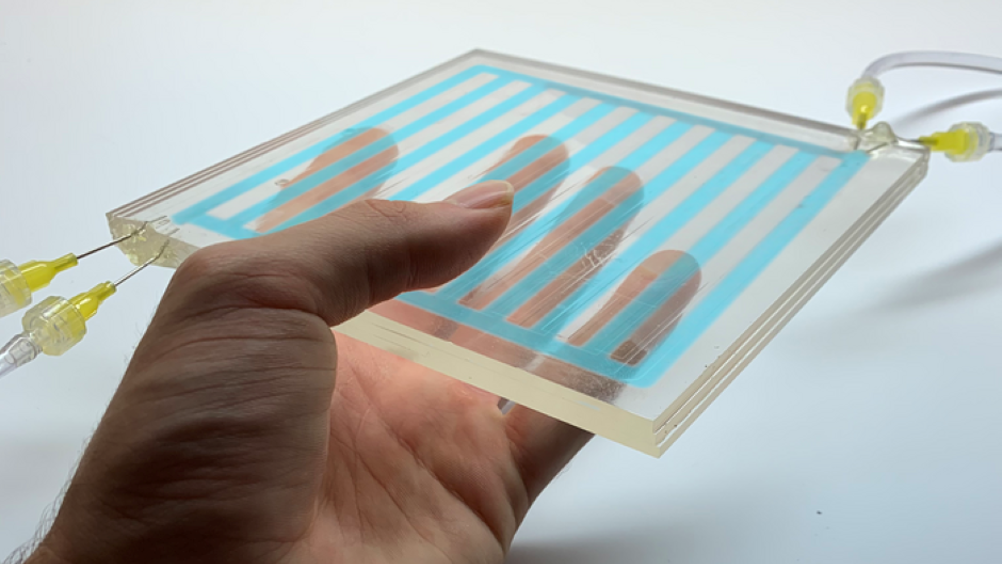Microfluidic system cuts energy costs for buildings
Researchers have developed a multi-layered fluidic system claimed to reduce the energy costs of HVAC and lighting in buildings by optimising the wavelength, intensity and dispersion of light.

Developed by a team at University of Toronto Engineering, the platform was inspired by the dynamic colour-changing skin of organisms such as squid. Compared with existing technologies, it offers much greater control while keeping costs low due to its use of off-the-shelf components.
“Buildings use a ton of energy to heat, cool and illuminate the spaces inside them,” said Raphael Kay, lead author on a new paper published in PNAS. “If we can strategically control the amount, type and direction of solar energy that enters our buildings, we can massively reduce the amount of work that we ask heaters, coolers and lights to do.”
So-called ‘smart’ building technologies including automatic blinds or electrochromic windows can be used to control the amount of sunlight that enters the room, but Kay said these systems are limited because they do not discriminate between different wavelengths of light, nor control how that light is distributed spatially.
Register now to continue reading
Thanks for visiting The Engineer. You’ve now reached your monthly limit of news stories. Register for free to unlock unlimited access to all of our news coverage, as well as premium content including opinion, in-depth features and special reports.
Benefits of registering
-
In-depth insights and coverage of key emerging trends
-
Unrestricted access to special reports throughout the year
-
Daily technology news delivered straight to your inbox










Water Sector Talent Exodus Could Cripple The Sector
Maybe if things are essential for the running of a country and we want to pay a fair price we should be running these utilities on a not for profit...